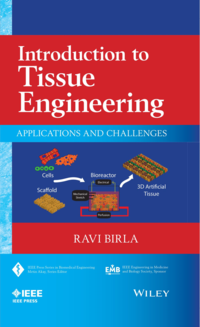STAT!Ref is pleased to announce the availability of two new resources called Introduction to Tissue Engineering: Applications and Challenges and Molecular Pharmacology: From DNA to Drug Discovery.
Introduction to Tissue Engineering: Applications and Challenges is a comprehensive reference and teaching aid on tissue engineering, covering everything from the basics of regenerative medicine to more advanced and forward thinking topics such as the artificial liver, bladder, and trachea.
Regenerative medicine/tissue engineering is the process of replacing or regenerating human cells, tissues, or organs to restore or establish normal function. It is an incredibly progressive field of medicine that may, in the near future, help with the shortage of life-saving organs available through donation for transplantation.
Introduction to Tissue Engineering: Applications and Challenges makes tissue engineering more accessible to undergraduate and graduate students alike. It provides a systematic and logical eight-step process for tissue fabrication.
Specific chapters have been dedicated to provide in-depth principles for many of the supporting and enabling technologies during the tissue fabrication process and include biomaterial development and synthesis, bioreactor design, and tissue vascularization. The tissue fabrication process is further illustrated with specific examples for liver, bladder, and trachea. Section-coverage includes an overall introduction of tissue engineering; enabling and supporting technologies; clinical applications; and case studies and future challenges.
Introduction to Tissue Engineering:
- Presents medical applications of stem cells in tissue engineering
- Deals with the effects of chemical stimulation (growth factors and hormones)
- Covers current disease pathologies and treatment options (pacemakers, prosthesis)
- Explains bioengineering, design and fabrication, and critical challenges during tissue fabrication
- Offers PowerPoint slides for instructors
- Features case studies and a section on future directions and challenges
As pioneering individuals look ahead to the possibility of generating entire organ systems, students may turn to this text for a comprehensive understanding and preparation for the future of regenerative medicine.
Purchasers will want to bundle this resource with Stem Cells in Craniofacial Development and Regeneration, Medical Biotechnology and Human Genetics and Genomics.
Molecular Pharmacology: From DNA to Drug Discovery provides a fresh, comprehensive and accessible introduction to the rapidly expanding field of molecular pharmacology. Adopting a drug target-based, rather than the traditional organ/system based, approach this innovative guide reflects the current advances and research trend towards molecular based drug design, derived from a detailed understanding of chemical responses in the body. Drugs are then tailored to fit a treatment profile, rather than the traditional method of ‘trial and error’ drug discovery which focuses on testing chemicals on animals or cell cultures and matching their effects to treatments.
Providing an invaluable resource for advanced under-graduate and MSc/PhD students, new researchers to the field and practitioners for continuing professional development, Molecular Pharmacology explores; recent advances and developments in the four major human drug target families (G-protein coupled receptors, ion channels, nuclear receptors and transporters), cloning of drug targets, transgenic animal technology, gene therapy, pharmacogenomics and looks at the role of calcium in the cell.
- Current – focuses on cutting edge techniques and approaches, including new methods to quantify biological activities in different systems and ways to interpret and understand pharmacological data.
- Cutting Edge – highlights advances in pharmacogenomics and explores how an individual’s genetic makeup influences their response to therapeutic drugs and the potential for harmful side effects.
- Applied – includes numerous, real-world examples and a detailed case-study based chapter which looks at current and possible future treatment strategies for cystic fibrosis. This case study considers the relative merits of both drug therapy for specific classes of mutation and gene therapy to correct the underlying defect.
- Accessible – contains a comprehensive glossary, suggestions for further reading at the end of each chapter and an associated website that provides a complete set of figures from within the book.
Purchasers will want to bundle this resource with Concepts in Pharmacogenomics, Cancer Principles & Practice of Oncology: Handbook of Clinical Cancer Genetics and Pharmacogenetics and Individualized Therapy.
Have any questions about these new resources? Please call 800-901-5494 or fill out this form to speak with a STAT!Ref Team Member today.

